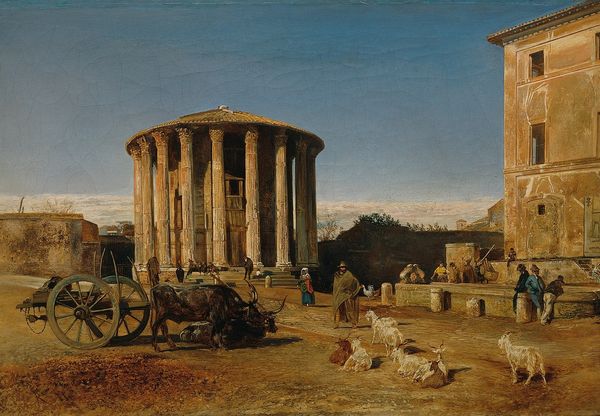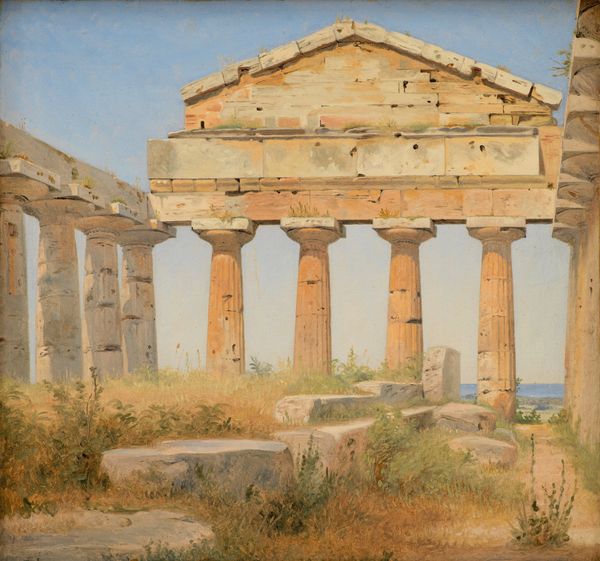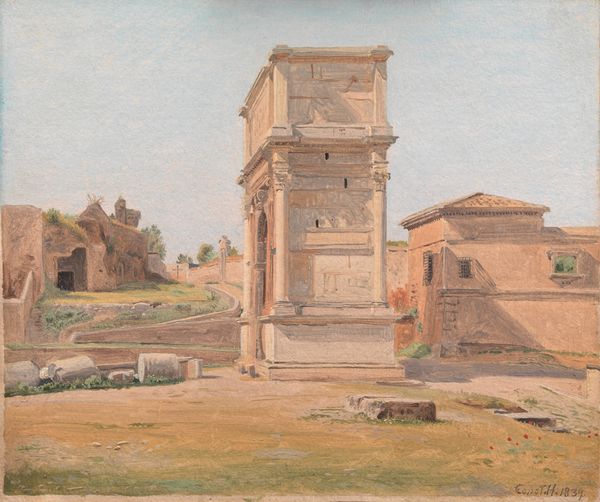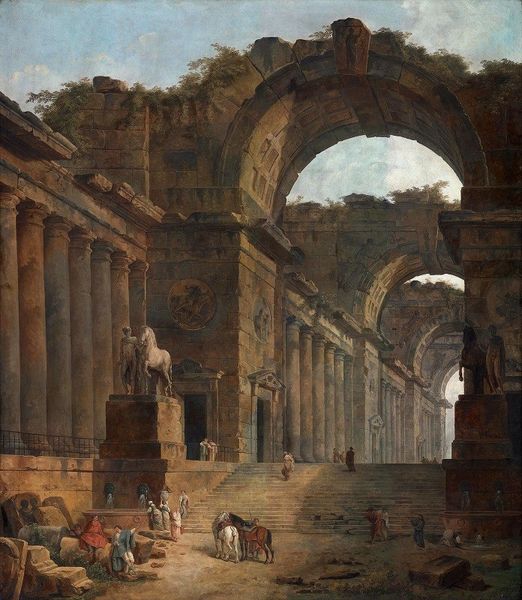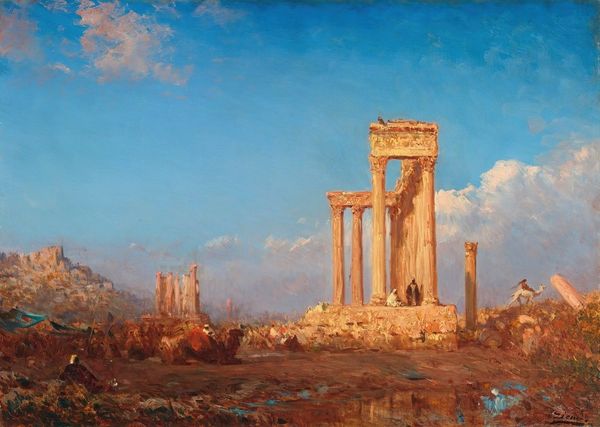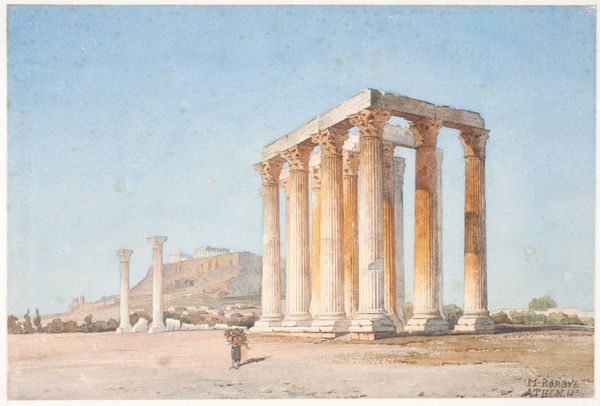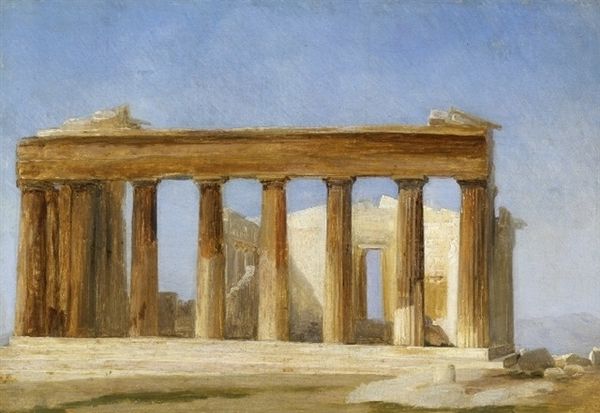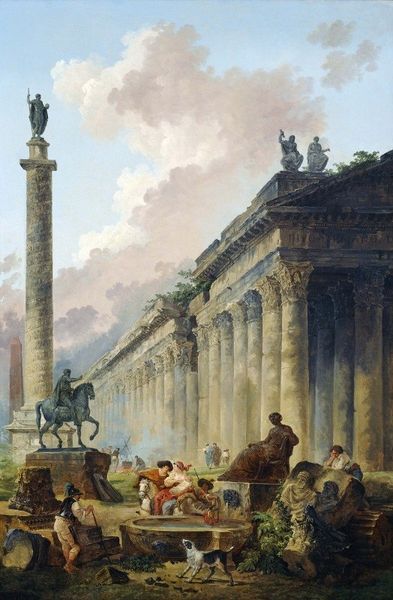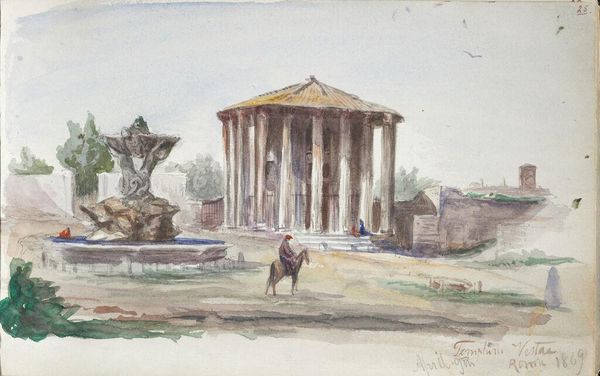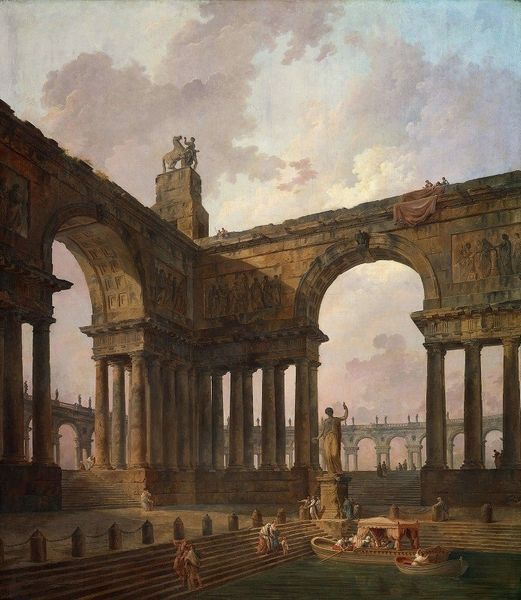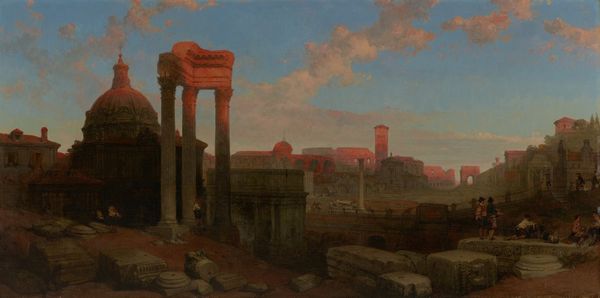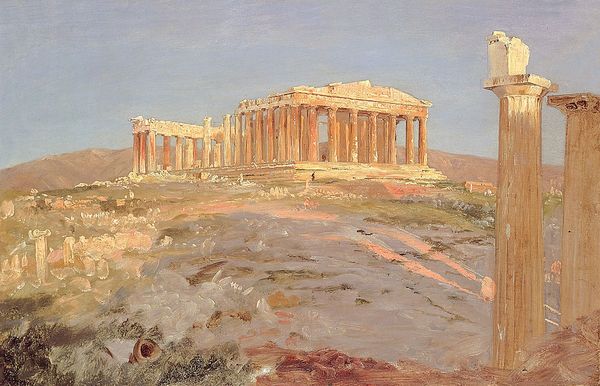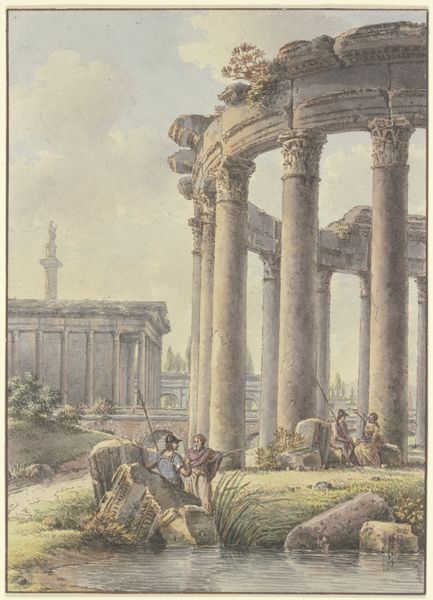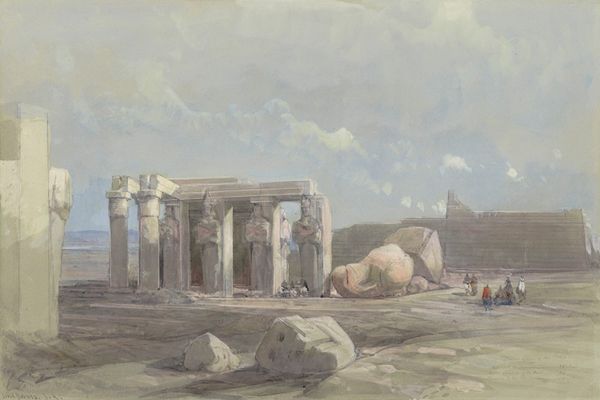
Piazza della Bocca della Verità with the so-called Vesta Temple in Rome 1837
0:00
0:00
painting, oil-paint
#
neoclacissism
#
water colours
#
painting
#
oil-paint
#
landscape
#
oil painting
#
romanticism
#
cityscape
#
watercolor
Dimensions: 75.5 cm (height) x 100 cm (width) (Netto), 89.1 cm (height) x 114 cm (width) x 9 cm (depth) (Brutto)
Constantin Hansen painted this view of the Piazza della Bocca della Verità in Rome, capturing the daily life around the ancient temple. The so-called Temple of Vesta, with its circular colonnade, dominates the scene, an echo of classical ideals. This architectural form, reminiscent of the sacred hearth, connects us to the ancient Roman reverence for Vesta, goddess of home and family. The fountain, alive with sculpted figures, further enhances the scene. Notice the game of bowls being played in the foreground. This simple act, set against the backdrop of historical grandeur, reflects the blending of the everyday with the eternal. The presence of the ancient temple serves as a persistent reminder of the past within the flow of present life. Such classical forms resurface repeatedly throughout history. They take on new life, adapted and re-imagined, in ways that reveal both our continuity with and our departure from the ancient world. Each repetition carries a new emotional charge, connecting our conscious selves with a distant, yet familiar, past.
Comments
statensmuseumforkunst almost 2 years ago
⋮
Constantin Hansen set out to capture everything considered typical of Rome at the time: the ancient monuments, the picturesque medieval architecture and the carefree lifestyle of the Romans. The motif centres on the so-called Vesta Temple (actually devoted to Hercules Victor, Hercules the Winner). In the foreground are Roman men playing boccia, a popular pastime, while oxen rest by their carts. As a final flourish the painter included the dome of St. Peter’s Basilica even though it cannot be seen from the spot chosen. The painting was intended for Danish audiences that may have dreamed of visiting Italy, but would only very rarely go. Even though many details could be observed in real life, the painting primarily reflects idealised Nordic notions about Rome.
Join the conversation
Join millions of artists and users on Artera today and experience the ultimate creative platform.
